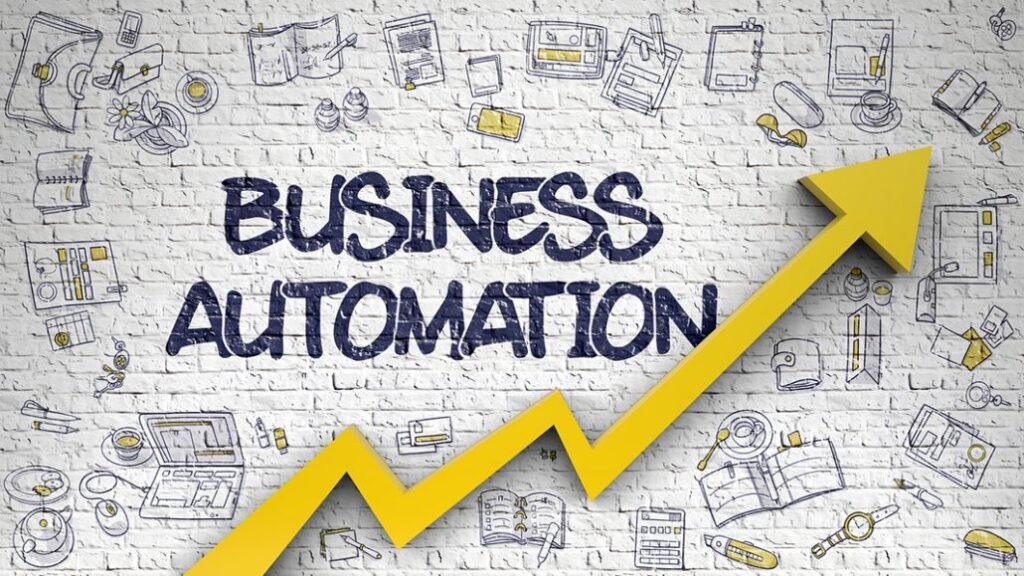INTRODUCTION
Business automation refers to the use of technology to automate repetitive and time-consuming tasks in a business setting. This can include tasks such as data entry, customer service, and financial management. The goal of business automation is to increase efficiency, reduce costs, and improve overall productivity.
WHY BUSINESS AUTOMATION IS IMPORTANT FOR YOUR BUSINESS
1. One of the key benefits of business automation is that it allows employees to focus on more important and strategic tasks. For example, instead of spending hours each week inputting data into a spreadsheet, employees can use automation tools to quickly and accurately complete this task.
2. Automating Business frees up time for employees to focus on tasks that require more critical thinking and creativity, such as developing new products or services or finding new ways to improve the customer experience.
3. Another key benefit of business automation is that it can help to reduce costs. By automating repetitive tasks, businesses can reduce the need for human labor, which can be expensive.
4. Automation can help to reduce errors and improve accuracy, which can save businesses time and money.
5. Business automation can also help to improve customer service. Automation tools can be used to respond quickly and accurately to customer inquiries, which can help to improve the overall customer experience.
6. Automation can help to improve communication between employees, which can help to improve the speed and efficiency of customer service.
TOOLS OF BUSINESS AUTOMATION
There are many different types of automation tools available for businesses, including software programs, robots, and other mechanical devices. Some of the most popular automation tools include:
- Customer Relationship Management (CRM) software: This type of software is used to manage customer interactions and data. It can be used to track customer interactions, store customer information, and automate customer service tasks.
- Accounting and financial management software: This type of software can be used to automate tasks such as invoicing, expense tracking, and financial reporting.
- Inventory management software: This type of software can be used to track inventory levels, manage reordering and restocking, and automate inventory tracking.
- Marketing automation software: This type of software can be used to automate tasks such as email marketing, social media management, and lead generation.
- Human Resources software: This type of software can be used to automate tasks such as onboarding, employee benefits, and performance evaluations.
EXAMPLES OF AUTOMATION SOFTWARE
1. TALLFY:
Managing workflows can be time-consuming, inefficient, and prone to errors. Workflow management software, such as Tallyfy, allows you to map out business processes and keep track of them step by step.
It lets you communicate the tasks to the right people and makes sure all the important steps of a process are carried out, leaving no room for error or mistakes.
2. SHOPIFY:
If you’re planning on taking your brick-and-mortar business online, Shopify is the easiest way to do so. The platform allows you to create and manage an e-commerce store without any technical know-how.
Plus, it offers thousands of possible business process integrations (drop shipping apps, for example), allowing you to further automate your business.
3. SALESFORCE:
Salesforce is one of the leading CRM platforms, bringing with it a great deal of automation potential and customization to integrate with other business automation tools to enhance the functionality of the platform for enterprise users.
With a mix of sales and marketing business automation tools, you can enhance your digital presence while empowering sales and service representatives with all the customer information they need to close deals and tend to customer needs.
4. SLACK:
The number of emails that a business owner has to sort through each day can be a never-ending landslide that’s impossible to escape from. It’s also easy to lose important items in those threads. Instead, use Slack to help streamline communication and get the conversation out of the inbox.
5. RUTTER:
This helps to automate more workflows for your customers and help them streamline month and quarter-end closing processes by syncing data into their accounting systems.
COST-BENEFIT OF AUTOMATION IN BUSINESS ENVIRONMENT
- Implementing business automation can be a complex and challenging process, but it is well worth the effort.
- The benefits of automation can be significant and include increased efficiency, reduced costs, and improved productivity. Businesses that are able to successfully implement automation will be well-positioned to stay competitive in today’s fast-paced business environment.
- However, it is important to note that automation is not a one-size-fits-all solution. Businesses should carefully consider which tasks are best suited for automation and which tasks should be left to human employees.
- Additionally, it’s important to consider the potential impact of automation on employees and to ensure that they are properly trained to use automation tools.
In conclusion, Business automation is an increasingly important strategy for businesses looking to stay competitive in today’s fast-paced business environment. By automating repetitive and time-consuming tasks, businesses can increase efficiency, reduce costs, and improve overall productivity.
There are many different types of automation tools available for businesses, including software programs, robots, and other mechanical devices. Businesses should carefully consider which tasks are best suited for automation and which tasks should be left to human employees.
With the right approach, automation can be a powerful tool for businesses looking to improve their operations and stay ahead of the competition.

